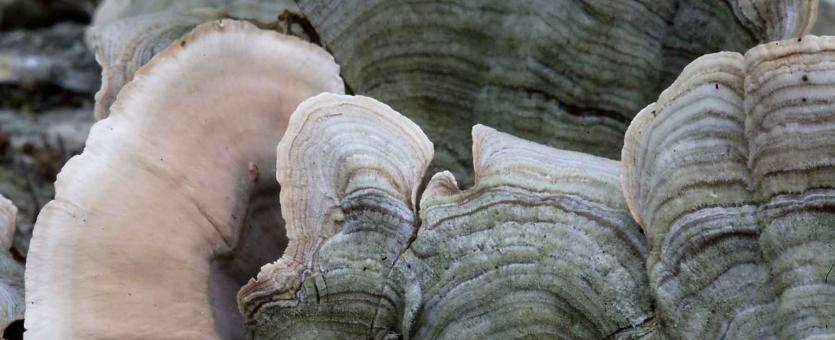
Large, layered groups of leathery, parchmentlike brackets with multicolored zones; underside smooth. Grows on stumps and logs of deciduous trees. Year-round. Cap semicircular, irregular; zones of browns, rusts, and sometimes green (from algae); texture leathery, hairy. Underside buff-colored, smooth. Stalk not present. Spore print white. Spores magnified are cylindrical, smooth.
Lookalikes: The "true" turkey tail (Trametes versicolor) has pores on the underside. The multicolor gill polypore (Lenzites betulina) has a gill-like underside.
Cap width: ½ –4 inches.

Statewide.
Habitat and Conservation
Grows in large, layered groups on stumps and logs of deciduous trees, especially oaks. It is extremely common. Although it has a smooth (not pored) underside, it looks and grows like a pored bracket.
Status
Not edible.
Life Cycle
This species exists as a network of fungal cells (mycelium) within rotting wood. The mycelium obtains nourishment by digesting, and rotting, the wood. When ready to reproduce, the mycelium develops the brackets outside the wood, which are reproductive structures. Spores are produced on the underside of the brackets and are released to begin new mycelia elsewhere.
Human Connections
Mushrooms decorate nature the way wildflowers do, adding to our pleasure on hikes. Like wildflowers, even the humblest of fungi can be strikingly beautiful. Discovering these wonders can bring out our innate capacity for awe and wonder.
Ecosystem Connections
This is one of the many fungus species that live on decaying wood. It and other such saprobic fungi play an incredibly important role in breaking down the tough materials wood is made of and returning those nutrients to the soil.
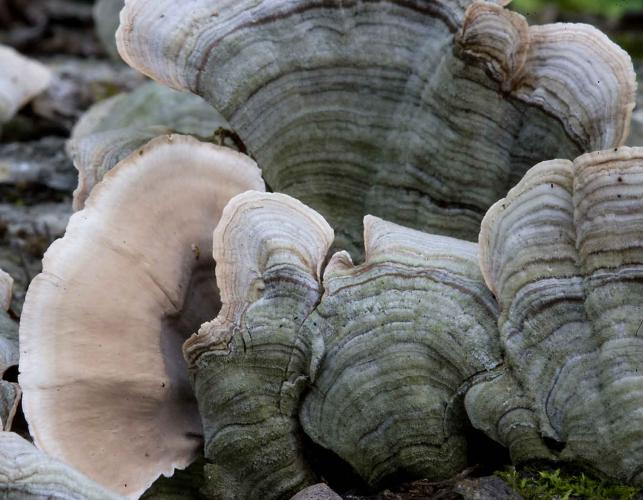
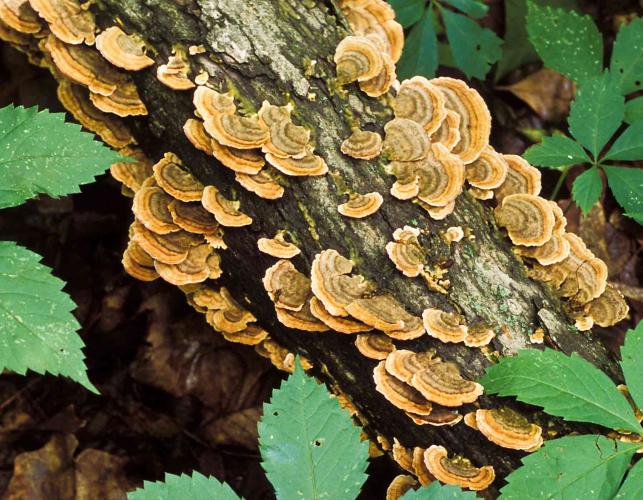
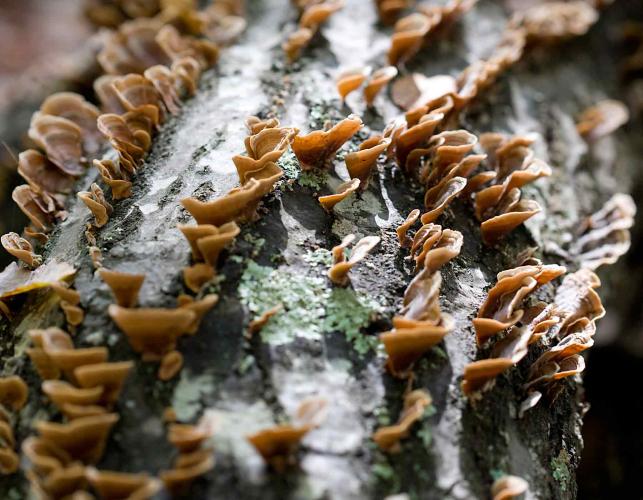

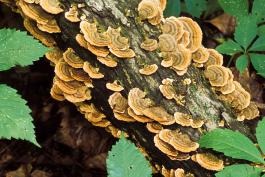
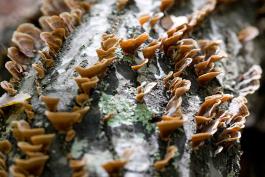
Mushrooms are a lot like plants, but they lack chlorophyll and have to take nutrients from other materials. Mushrooms are neither plants nor animals. They are in a different kingdom — the fungi. Fungi include the familiar mushroom-forming species, plus the yeasts, molds, smuts, and rusts.
Always be cautious when eating edible mushrooms. Be absolutely sure of the ID, and only eat a small amount the first time you try it to avoid a reaction..





















